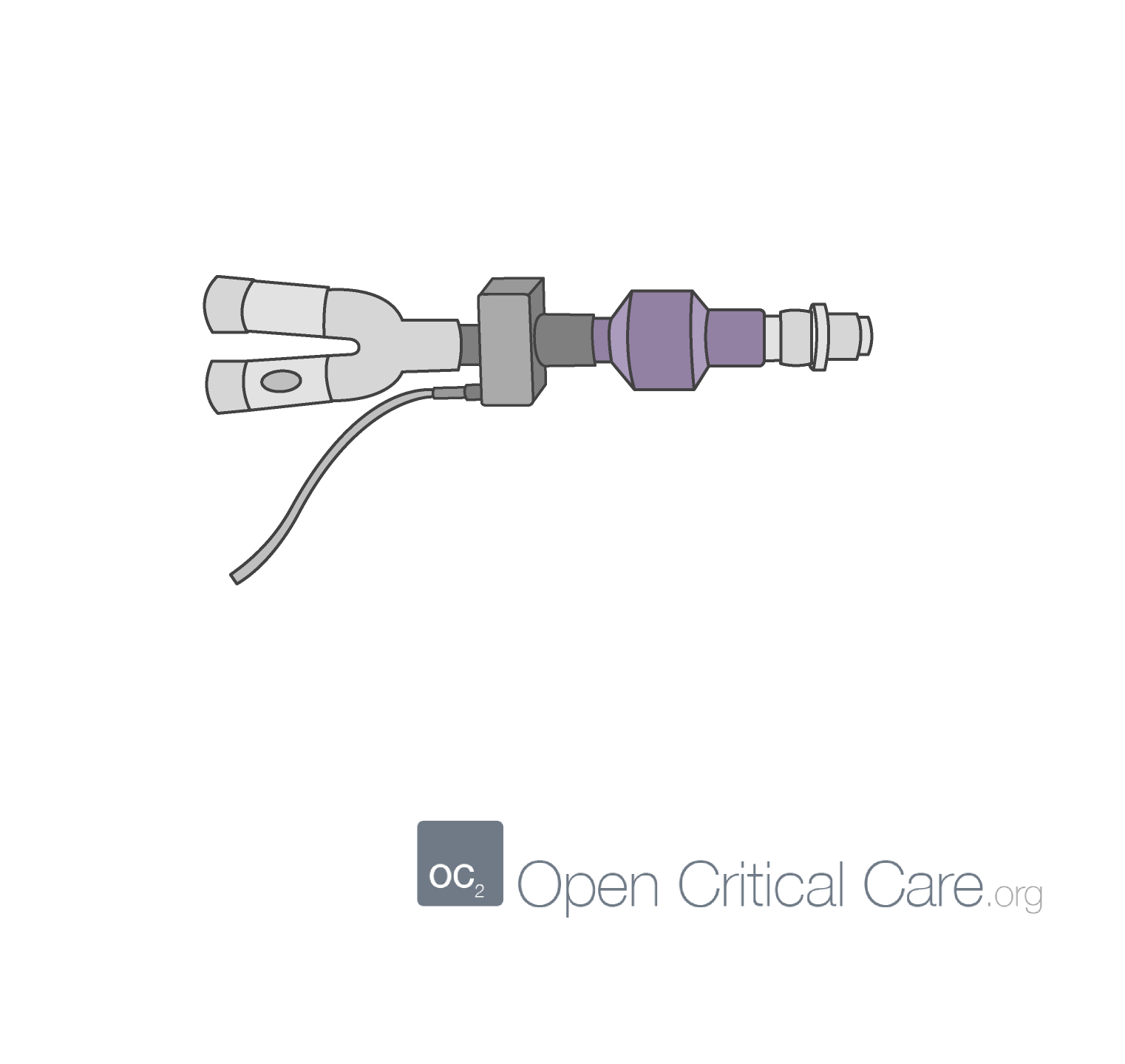
The sensor emits infrared light to a photodetector on the other side of the adapter. In this method, a lightweight infrared sensor is attached directly to the adapter.

Mainstream capnography ( Figure 8-3) involves the use of an adapter between the breathing circuit and the endotracheal tube. The infrared (IR) light sensor is contained within the capnometer, not in the airway circuit. Keeping the sample tubing antigravity may also minimize contamination from water vapor or secretions. The use of a filter between the tubing and the unit containing the CO 2 sensor minimizes this problem.

A drawback of sidestream capnography is that the tubing may become blocked by water vapor or secretions. For example, modified nasal cannulas allow the sampling of expired gases even while supplemental oxygen is administered. One of the main advantages of sidestream capnography is that it can be used in nonintubated patients. Because this gas sample must travel through the tubing to the CO 2 sensor before it is processed, a slight delay occurs in the display of the CO 2 waveform. A sample of gas is aspirated through this disposable tubing during the respiratory cycle into the capnometer for measurement. The tubing is connected from the side port on the adapter to a separate monitor unit, which contains the CO 2 sensor. It involves the use of disposable tubing (6 feet long) and a T-piece adapter, which is inserted between the breathing circuit and the endotracheal tube or other airway device.
Mainstream capnography serial numbers#
In addition, the warranty does not cover: (i) defects or deficiencies from improper storage or handling, maintenance or use that does not conform to OEM specifications (e.g., accidental damage, improper cleaning, disinfecting, TEE bite marks), inadequate back-up or virus protection, cyber-attacks, or failure to maintain power quality, grounding, temperature and humidity within OEM specifications (ii) repairs due to power anomalies or any cause external to the part or Specialty Component or beyond GE HealthCare’s control (iii) payment or reimbursement of facility costs arising from repair or replacement of the part or Specialty Component (iv) planned maintenance, adjustment, alignment, or calibration (v) lost or stolen parts or Specialty Components (vi) parts and Specialty Components with serial numbers altered, defaced or removed (vii) modification of the part or Specialty Component not approved in writing by GE HealthCare and (viii) parts or Specialty Components immersed in liquid.Sidestream capnography ( Figure 8-2) is the most widely used method for continuous CO 2 monitoring in the operating room. Warranty service does not include installation.

Mainstream capnography license#
GE HealthCare has no obligation to Customer for warranty claims if Customer uses the part or Specialty Component: (a) for non-medical or entertainment use or outside the United States (b) in combination with any software, hardware or services not recommended in writing by GE HealthCare and (c) in a manner or environment for which GE HealthCare did not design or license it, or in violation of GE HealthCare’s recommendations or instructions. NO OTHER EXPRESS OR IMPLIED WARRANTIES, INCLUDING IMPLIED WARRANTIES OF NON-INFRINGEMENT, MERCHANTABILITY AND FITNESS FOR A PARTICULAR PURPOSE, WILL APPLY. If an exchange part or Specialty Component is provided, the original becomes GE HealthCare property and Customer must return it to GE HealthCare within a reasonable timeframe of replacement to avoid being billed for the non-returned part or Specialty Component. The warranty for a part or a Specialty Component provided to correct a warranty failure is the unexpired term of the warranty for the repaired or replaced part or Specialty Component. If Customer promptly notifies GE HealthCare of its claim during the warranty and makes the part or Specialty Component available, GE HealthCare will (at its option and subject to the foregoing terms) repair, adjust or replace (with new or refurbished/repaired) the non-conforming part or Specialty Component.
Mainstream capnography full#
Customer must pay the then-current price of the Specialty Component replacement less the Pro Rata warranty allowance (a fraction of a month less than 15 days will be disregarded, and a fraction of a month equal to or greater than 15 days will be regarded as a full month).


 0 kommentar(er)
0 kommentar(er)
